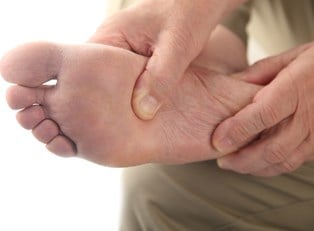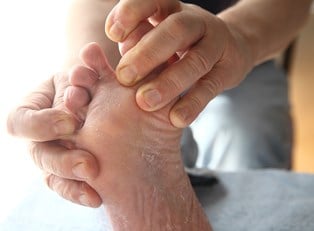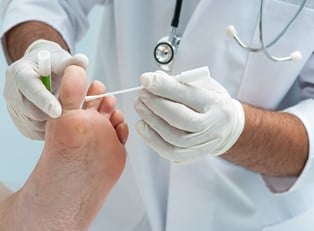Athlete’s foot is a fungal infection that mostly affects the skin in between the toes. It appears as a scaly rash that will itch, sting, and burn. The reason behind the name is because athlete’s foot typically seems to be more common in people whose feet often become very sweaty because of tight-fitting shoes, such as those who participate in sports.
Causes
Athlete’s foot is a highly contagious form of ringworm and is easily spread through direct contact with someone who is infected or by coming into contact with a contaminated surface such as towels, floors, or shoes. The fungus that causes ringworm thrives in warm, humid environments. Therefore, damp socks and shoes are beneficial for the organisms’ growth.
Risk Factors
Although athlete’s foot can affect anyone, there are certain factors that can put you at a higher risk. These include:
- Gender: Men are more likely to develop the infection than women.
- Footwear: Frequently wearing damp socks and tight-fitting shoes promotes the growth of the infection.
- Hygiene: Walking barefoot in public areas such as saunas, swimming pools, locker rooms, and communal showers and baths makes it easier for the infection to come into contact with your feet. Sharing mats, rugs, clothes, bed linens, or shoes with someone who is infected with athlete’s foot also makes it easier for the infection to be spread to your body.
- Compromised Immunity: A weakened immune system makes your body more susceptible to developing any infection.
It is also possible to contract athlete’s foot from your pet. Pets are able to carry the fungus on their fur, and patches of missing fur can indicate the infection on them. If you come into contact with a contaminated animal, the infection can be spread to you.
Prevention
To prevent the contraction of athlete’s foot, there are some precautionary actions you can take. Try to keep your feet as dry as possible, especially between your toes; letting your feet air out as much as possible will reduce your risk of developing athlete’s foot.
Changing socks often, especially if they are sweaty, will keep your feet from being damp for long periods of time. Avoid shoes that are mad out of synthetic material and instead wear light, well-ventilated shoes. You can also alternate between two different pairs of shoes, so that your shoes get the chance to dry and air out completely between uses.
Always be sure to wear waterproof sandals if you are spending time in communal showers, pools, or fitness centers. If you have struggled with athlete’s foot in the past, it can be helpful to use antifungal powder on your feet every day as a preventative method.



